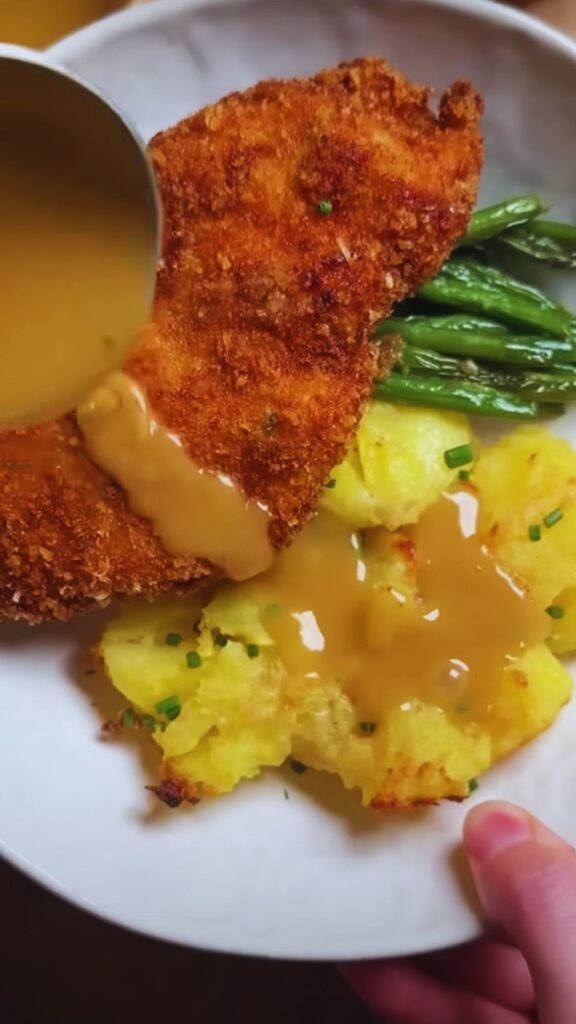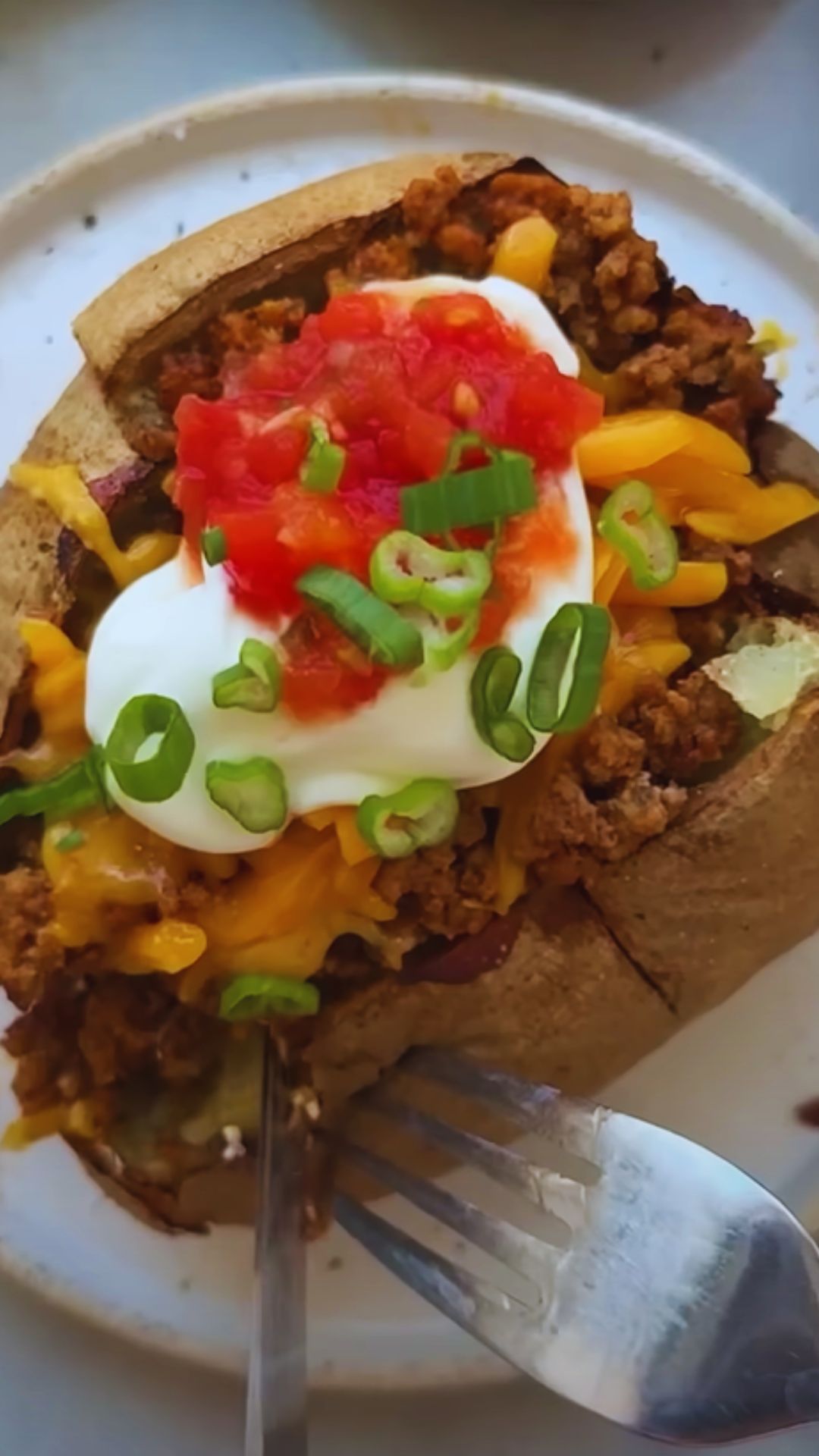Have you ever wondered why restaurant roast potatoes have that perfect crunch while yours turn out just… okay? I’ve spent years perfecting the art of the crispy roast potato, and I’m thrilled to share everything I’ve learned with you. These aren’t just any roast potatoes—they’re game-changers that will have your holiday dinner guests asking for your secret.
The Science Behind the Perfect Crunch
I remember my grandmother telling me that patience makes the perfect potato, and she wasn’t wrong. But there’s actually some fascinating food science behind creating that golden, glass-like exterior with a fluffy interior.
When you parboil potatoes and then rough up their surfaces, you’re creating tiny crevices that will crisp up beautifully in hot fat. The exterior starch gelatinizes first in the water, then dehydrates in the oven, forming that satisfying crackly shell we all crave.
I’ve made every mistake possible on my crispy potato journey—from using the wrong variety to skipping key steps. Let me walk you through the foolproof method I’ve developed after countless holiday dinners.
Choosing the Right Potato
Not all potatoes are created equal when it comes to roasting. The variety you select can make or break your roast potato experience.
Best Varieties for Roasting:
- Russet/Idaho: High starch content creates a fluffy interior
- Yukon Gold: Buttery flavor with the perfect starch-to-moisture ratio
- Maris Piper: Popular in the UK, exceptional for roasting
- King Edward: Develops beautiful crispy edges
- Desiree: Red-skinned variety with creamy texture
Varieties to Avoid:
- New potatoes: Too waxy and hold their shape too well
- Red Bliss: Not enough starch for proper crisping
- Fingerlings: Too much moisture, not ideal for traditional roasting
I personally reach for Yukon Golds most often. They hit the sweet spot between starchy and waxy, developing a beautiful crust while maintaining a buttery, creamy center.
Essential Equipment
Having the right tools on hand makes this process much more manageable:
| Equipment | Purpose | Recommendation |
|---|---|---|
| Heavy roasting pan | Conducts heat evenly, preventing burning | Cast iron or heavy aluminum, avoid non-stick |
| Sharp knife | For precise, clean cuts | Chef’s knife with 8-inch blade |
| Large pot | For parboiling potatoes | 8-quart stainless steel with lid |
| Colander | Draining and roughing up potatoes | Metal colander with sturdy handles |
| Instant-read thermometer | Testing oil temperature | Digital with range up to 400°F/200°C |
| Kitchen timer | Prevents overcooking | Digital with multiple timing functions |
| Heat-resistant spatula | For turning without breaking | Silicone-edged metal spatula |
| Serving platter | For beautiful presentation | Pre-warmed ceramic or stoneware |
The Ultimate Crispy Roast Potato Recipe
Serves: 8-10 as a side dish
Prep Time: 20 minutes
Cook Time: 1 hour 15 minutes
Total Time: 1 hour 35 minutes
Ingredients
- 4.5 pounds (about 2 kg) Yukon Gold or Russet potatoes
- 1/3 cup (80 ml) duck fat, goose fat, beef tallow, or olive oil
- 4 tablespoons semolina or polenta (cornmeal)
- 8-10 cloves garlic, unpeeled but slightly crushed
- 6-8 sprigs fresh rosemary
- 8-10 sprigs fresh thyme
- 2 tablespoons kosher salt, divided
- 1 tablespoon baking soda
- Freshly ground black pepper
- Flaky sea salt for finishing
Instructions
1. Preparation Phase
- Preheat your oven to 450°F (230°C) with a rack in the middle position.
- Peel the potatoes and cut them into chunks roughly 2-3 inches in size. I aim for similar-sized pieces to ensure even cooking.
- Place your chosen fat into a large roasting pan and put it in the oven to heat up while you prepare the potatoes. This step is crucial—the fat must be screaming hot when the potatoes go in.
2. The Perfect Parboil
- Fill a large pot with water (about 2 quarts/2 liters).
- Add 1 tablespoon of kosher salt and 1 tablespoon of baking soda. The baking soda raises the pH of the water, which helps break down the exterior of the potatoes for maximum crispiness.
- Bring the water to a boil over high heat.
- Add your potato chunks and reduce to a simmer.
- Parboil for 10 minutes exactly. They should be soft around the edges but not falling apart.
3. The Magic Roughing Up
- Drain the potatoes carefully in a colander.
- Allow them to steam dry for 2-3 minutes—this is essential for crispiness.
- Return the potatoes to the empty pot.
- Sprinkle over the semolina or polenta and the remaining tablespoon of kosher salt.
- Place the lid on the pot and, holding it firmly, give the potatoes a good shake to rough up the surfaces. This creates the perfect texture for crisping.
4. The Roasting Process
- Carefully remove the hot roasting pan from the oven. The fat should be shimmering.
- Using tongs or a slotted spoon, gently transfer the roughed-up potatoes to the hot fat. Be careful—it will spit!
- Turn each potato to coat in the fat.
- Arrange them in a single layer with plenty of space between pieces—overcrowding is the enemy of crispiness.
- Return the pan to the oven and roast for 30 minutes undisturbed.

5. The Flavor Infusion
- After 30 minutes, remove the pan from the oven. The potatoes should be starting to color nicely.
- Using a spatula, carefully turn each potato.
- Add the unpeeled garlic cloves and herb sprigs, tucking them between the potatoes.
- Return to the oven for another 30-40 minutes, turning once more halfway through.
6. The Final Touch
- The potatoes are done when they’re deeply golden brown and crispy all over.
- Transfer to a serving platter lined with paper towels to absorb any excess fat.
- Discard the herb sprigs but keep the roasted garlic for serving.
- Sprinkle with flaky sea salt and freshly ground black pepper.
- Serve immediately for maximum crispiness.

Troubleshooting Your Roast Potatoes
I’ve made every mistake in the book, so learn from my failures!
| Problem | Cause | Solution |
|---|---|---|
| Potatoes are soggy, not crispy | Not enough heat or overcrowding | Use a higher temperature and give potatoes more space |
| Burnt exterior, raw interior | Temperature too high or cut too large | Lower oven to 425°F (220°C) and cut smaller |
| Potatoes sticking to the pan | Pan not hot enough when potatoes added | Preheat pan with fat for at least 10 minutes |
| Bland flavor despite herbs | Added herbs too early | Add woody herbs halfway through cooking |
| Exterior not rough enough | Insufficient parboiling or roughing up | Increase parboil time by 2 minutes and shake more vigorously |
| Uneven browning | Inconsistent potato size | Cut potatoes to uniform size |
| Potatoes absorbing too much oil | Not dry enough before roasting | Steam dry thoroughly after parboiling |
| Chewy, not crispy skin | Using waxy potatoes | Switch to a starchy variety |
Make-Ahead Tips for Holiday Cooking
Holiday cooking is stressful enough without having to time everything perfectly. Here’s how I prepare my roast potatoes in advance:
Day Before:
- Peel and cut potatoes
- Store in cold water in the refrigerator (up to 24 hours)
- Prepare herb sprigs and garlic, store in airtight container
Morning Of:
- Parboil, rough up, and season potatoes
- Cool completely and refrigerate on a baking sheet
- Heat fat in roasting pan before dinner
- Roast pre-prepared potatoes, adding 5-10 minutes to cooking time
Note: While make-ahead potatoes are convenient, they’re never quite as perfect as those made from start to finish. If crispy perfection is your goal, make them fresh.
Flavor Variations
While the classic rosemary and garlic version is my go-to, I love experimenting with different flavor profiles:
Mediterranean Style
- Replace regular salt with 1 tablespoon dried oregano, 1 teaspoon dried thyme
- Add lemon zest after cooking
- Finish with crumbled feta cheese
Spicy Harissa
- Mix 2 tablespoons harissa paste with the hot fat before adding potatoes
- Add 1 teaspoon cumin seeds halfway through cooking
- Finish with chopped fresh cilantro
Truffle Luxury
- Use clarified butter instead of other fats
- Drizzle with truffle oil just before serving
- Sprinkle with grated Parmesan and chopped parsley
Smoky Paprika
- Add 2 tablespoons smoked paprika to the semolina coating
- Include 2 teaspoons garlic powder in the coating
- Finish with chopped chives

Serving Suggestions
The perfect crispy roast potato deserves companions that complement its texture and flavor:
Main Dishes:
- Prime rib roast with horseradish cream
- Roast turkey with cranberry sauce
- Herb-crusted rack of lamb
- Roast chicken with pan gravy
- Glazed ham with honey mustard
Side Dishes:
- Creamed spinach with nutmeg
- Honey-glazed carrots
- Brussels sprouts with bacon
- Yorkshire puddings
- Braised red cabbage with apple
Sauces:
- Classic gravy made from meat drippings
- Garlic aioli for dipping
- Chimichurri for a fresh contrast
- Horseradish cream for kick
- Mushroom sauce for earthiness
Nutritional Information and Dietary Adaptations
While roast potatoes are an indulgence, it’s good to know what you’re consuming. Here’s the approximate nutritional breakdown per serving (assuming 10 servings):
| Nutrient | Amount per Serving | % Daily Value |
|---|---|---|
| Calories | 230 | 11.5% |
| Total Fat | 9g | 11.5% |
| Saturated Fat | 3.5g | 17.5% |
| Cholesterol | 10mg | 3.3% |
| Sodium | 390mg | 17% |
| Total Carbohydrates | 35g | 12.7% |
| Dietary Fiber | 3g | 10.7% |
| Sugars | 1g | 2% |
| Protein | 4g | 8% |
| Vitamin C | 45% | – |
| Potassium | 15% | – |
Dietary Adaptations
Vegan Version:
- Replace animal fat with olive oil or coconut oil
- Add nutritional yeast with the semolina for a savory boost
- Consider adding smoked paprika for depth
Lower-Fat Option:
- Use cooking spray to coat the roasting pan
- Reduce oil to 2 tablespoons, adding a splash of vegetable broth for moisture
- Increase herbs and spices to compensate for reduced fat flavor
Gluten-Free Concerns:
- These potatoes are naturally gluten-free
- Ensure your semolina substitute is certified gluten-free if needed
- Be careful with pre-mixed seasonings which may contain gluten
Common Mistakes to Avoid
In my years of potato roasting, I’ve identified these critical errors that can ruin your results:
- Skipping the parboil: This is non-negotiable for truly crispy exteriors.
- Not drying the potatoes: Moisture is the enemy of crispness.
- Cold fat: The fat must be screaming hot when potatoes are added.
- Overcrowding the pan: Give each potato room to crisp up.
- Opening the oven too often: This drops the temperature dramatically.
- Under-seasoning: Potatoes need plenty of salt to shine.
- Using the wrong fat: Different fats have different smoke points and flavors.
- Not preheating the oven fully: Start with a properly hot oven.
- Cutting inconsistently: Different sizes cook at different rates.
- Serving on cold plates: Your perfectly crisp potatoes will steam and soften.
Frequently Asked Questions
Why did my potatoes turn out soggy instead of crispy? The most common causes are overcrowding the pan, not parboiling long enough, or not roughing up the surfaces sufficiently. Also, make sure your fat is hot enough before adding the potatoes.
Can I use olive oil instead of animal fat? Absolutely! While duck and goose fat offer traditional flavors, a good quality olive oil works wonderfully. Just be aware that extra virgin olive oil has a lower smoke point, so you may need to reduce your oven temperature slightly.
How far in advance can I prepare these potatoes? You can parboil, rough up, and season the potatoes up to 24 hours ahead. Store them uncovered in the refrigerator to dry out even more. Roast them just before serving, adding 5-10 minutes to the cooking time since they’ll be cold.
Why add baking soda to the parboiling water? Baking soda raises the pH of the water, which helps break down the exterior starches on the potatoes. This creates more surface area to crisp up during roasting.
Can I freeze parboiled potatoes before roasting? Yes, but with caveats. Freeze them on a baking sheet first, then transfer to freezer bags. Roast directly from frozen, adding about 15 minutes to the cooking time. The results won’t be quite as perfect as fresh, but still delicious.
What’s the best way to reheat leftover roast potatoes? Reheating in a hot oven (400°F/200°C) is best. Place them in a single layer on a baking sheet for 10-15 minutes. Avoid the microwave, which will make them soggy.
Can I add other vegetables to roast alongside the potatoes? It’s best to roast other vegetables separately. Potatoes require specific cooking conditions, and other vegetables might release moisture or cook at different rates, compromising your perfectly crispy results.
How do you prevent potatoes from sticking to the pan? Ensure your fat is properly heated before adding the potatoes, don’t crowd the pan, and don’t disturb the potatoes during the first 30 minutes of roasting.
Do I need to use semolina/polenta, or can I skip it? While not absolutely essential, the semolina or polenta adds an extra dimension of crispiness. If you don’t have either, plain flour will work in a pinch, but the results won’t be quite as spectacular.
Why are my potatoes browning unevenly? This is usually due to inconsistent sizing or oven hot spots. Cut your potatoes to uniform sizes and rotate the pan halfway through cooking.
My Final Thoughts
The pursuit of the perfect crispy roast potato might seem obsessive, but I believe it’s worth every minute of effort. These potatoes aren’t just a side dish—they’re often the first thing to disappear from the holiday table.
I’ve served these at countless family gatherings, and the reaction is always the same: wide eyes, followed by the question, “How did you get them so crispy?” Now you know all my secrets.
Remember that great cooking often comes down to respecting the process. Each step in this method serves a purpose, from the baking soda bath to the semolina coating. Skip one, and you’ll notice the difference.
Whether you’re preparing a special Sunday roast or an elaborate holiday feast, these crispy potatoes will elevate your meal from good to unforgettable. After all, in the world of comfort food, few things can compete with the simple pleasure of a perfectly roasted potato—shatteringly crisp on the outside, fluffy and tender within.




